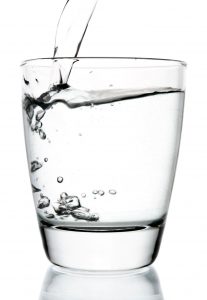Seawater Desalination
 “Among all our uncertainties, weather is one of the most basic. We can’t control it. We can only live with it, and now we have to live with a very serious drought of uncertain duration.”
“Among all our uncertainties, weather is one of the most basic. We can’t control it. We can only live with it, and now we have to live with a very serious drought of uncertain duration.”
Edmund G. Brown Jr.
State of the State Speech, January 22, 2014
Current drought conditions in California have posed extraordinary pressure on water demands from existing water supplies. The State’s current recommendation is that desalination should be considered a future water source where it is economically and environmentally appropriate, and as an element of a balanced water supply portfolio that also includes conservation and water recycling to the maximum extent practicable.1 The OPC plays an immediate role as facilitator of inter-agency communication regarding best practices as facilities, and their respective technologies, are considered.
Identifying Best Practices
Although some current desalination technologies employed in California may have minimal adverse impact to the environment, other conventional or emerging desalination technologies may include adverse effects on marine life, including fish larvae impingement-entrainment, concentrated brine waste effluent into the ocean, and high energy consumption.
The OPC will continue to work with California agencies and stakeholders to assist with needed analyses, to provide policy input, and to help shape recommendations about desalination technologies that are based on the best available science. Examples of best practices include site location, facility design, technology, and appropriate mitigation. Two partner agencies that are in the midst of crafting desalination-based policies include:
The State Water Resources Control Board (SWRCB) is currently updating the California Ocean Plan, and the pending amendments are anticipated to address mitigation, brine discharges, and seawater intakes (expected for public release during Summer 2014). For more information, please visit the SWRCB page on Desalination Facilities and Brine Disposal.
The Department of Water Resources (DWR) is coordinating a multiagency effort to update the California Water Plan, and will be the first time coastal and marine elements will be incorporated. For more information, please visit the Department of Water Resources Water Plan site.
Seawater Desalination State Interagency Working Group (IAWG)
The OPC facilitates a group of state agencies that meet to discuss issues surrounding seawater desalination. Current members include staff from the following:
- California Coastal Commission
- Public Utilities Commission2
- Department of Fish and Wildlife
- Regional Water Quality Control Boards
- Department of Public Health
- State Coastal Conservancy
- Department of Water Resources
- State Lands Commission
- Ocean Protection Council
- State Water Resources Control Board
Several purposes of the group include:
Purpose #1: Provide a forum for informal exchange of information with project proponents. The working group is available for project proponents to discuss proposed projects that are close to entering the permit application process, to learn about permit concerns and resolve issues, and to determine expected permitting timelines.
Purpose #2: Internal communication regarding state policy. Apart from meeting with project proponents, the working group meets on its own roughly every quarter to discuss state policy issues. These meetings allow state agencies to have a better understanding of developing state policies, but it should be noted that each agency retains its own authority in developing policies.
Purpose #3: Provide an entry point for stakeholder groups to communicate with regulatory/land management agencies. The OPC staff coordinating the group has served as an entry point for stakeholders, both in support or opposed to seawater desalination, to communicate with members of the working group.
Purpose #4: Identify data layers for the California Coastal Geoportal. The OPC, in its role of implementing AB 2125 (Ruskin) has developed the California Coastal Geoportal in partnership with the California Technology Agency. The Coastal Geoportal is a user-friendly website for finding high priority coastal and marine datasets, such as aerial photos, marine protected areas, and coastal habitats. Members of the desalination interagency working group have identified some of the data layers needed to make determinations about siting concerns (e.g. location of onshore infrastructure, soft bottom sediment appropriate for subsurface intake wells, etc.). Stakeholder groups, whether supportive or opposed to seawater desalination, may use the Geoportal to synthesize information from these data layers into maps for informed siting of desalination facilities.
The working group continues to meet to discuss state policy issues and is available to any seawater desalination project proponent close to entering the permit process or other stakeholder who wishes to exchange information with state regulatory/land management agencies.
Links:
California Desalination Planning Handbook
1 Water Desalination – Findings and Recommendations (Department of Water Resources (DWR), 2003). California Water Plan Update (DWR, 2009).
2 CPUC has not been a participating member but has been recently identified as an important member for future meetings of the working group.

